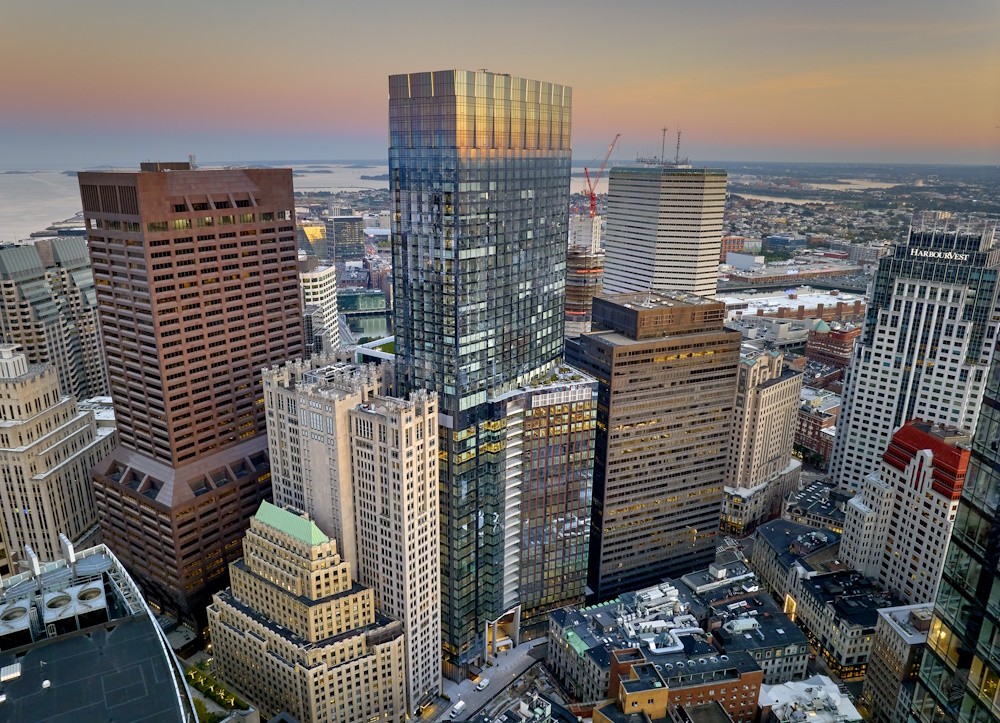The Real-Estate Downturn Comes for America’s Premier Office Towers

The highest quality office buildings have had much better success navigating the industry’s turmoil. Now, even premier towers are starting to wobble.
Rents at the highest-end buildings have been falling, while the rate of leasing has been slowing. Tenants have become more sensitive to costs in a world of higher interest rates and lingering concerns about a possible economic slowdown, market participants say.
Owners of the most elite buildings escaped this fate for a while by convincing the market they had created a new class of office tower—one that surpassed the traditional Class A building at the top of the pecking order.
These landlords persuaded blue-chip tenants that reluctant workers would return if only their offices sparkled with lush roof decks, fully loaded gyms and food prepared by Michelin-starred chefs. Owners invested heavily in these properties, which were usually new developments with the best locations, views, air quality and modern designs.
But that strategy is losing steam as more companies have accepted the reality of hybrid work schedules and, for the most part, have given up on compelling workers to be in five days a week.
“The ship has sailed on full return to the office for most companies,” said Rob Sadow, chief executive of Scoop Technologies, a software firm that developed an index that tracks workplace strategies. “They’re not going to go from three days a week to five days a week by making their space nicer.”
That’s one reason why few office developers are considering new ground breakings. Current rents don’t pencil out for building expensive space. The U.S. had only 31 million square feet in office construction starts last year, the lowest level since 2010. New buildings will represent only 1% of inventory by 2027, the lowest in at least 25 years, according to CoStar.
“New starts have essentially ground to a halt,” said Dylan Burzinski, analyst at real-estate analytics firm Green Street.
Premium, amenity-rich office space has outperformed in terms of rent and occupancy throughout the pandemic. In New York, SL Green Realty opened a new office tower called One Vanderbilt across the street from Grand Central Terminal in the fall of 2020. It boasted a 4,000-square-foot terrace and cafe and a menu overseen by star chef Daniel Boulud. The 93-story building quickly filled up even though its top asking rents were near record levels at more than $300 a square foot.
That sort of exceptionalism is beginning to wane. Asking rents for prime space in 16 U.S. markets declined in the third quarter after increasing on average from about $61 a square foot in mid-2021 to close to about $70 in the second quarter of last year, according to CBRE Econometric Advisors. They were just under $69 in the fourth quarter, CBRE said.
The share of leasing activity is also falling among the premier towers. The office properties that data firm CoStar Group defines as five-star buildings accounted for 8% of the market in 2022 and 2023, down from 10% in 2019. Meanwhile, new leases in five-star buildings were on average 43% smaller than 2019, CoStar said, reflecting how companies are becoming more efficient in their space use and tolerating some degree of work from home.
In the fourth quarter, 62% of companies offered some form of remote work, up from 51% one year ago, according to Scoop. On average, those companies with hybrid strategies required workers in the office 2.5 days a week in October, Scoop said. In 2021 and 2022, many companies still expected to bring workers back five days a week and were leasing space with that in mind.
Office buildings that have opened recently have done well, but not by One Vanderbilt’s standards. In Boston, for example, Millennium Partners has leased about 60% of the 812,000 square feet of office space that hit the market last year in the new Winthrop Center project with such tenants as Cambridge Associates and consulting giant McKinsey. But rents are about 10% less than what Millennium originally forecast, said Joe Larkin, principal of MP Boston, the developer’s local arm.
Larkin said that Millennium expects to achieve its goal of taking three years to lease the building. “What we lost in the last couple of years is the hope to exceed how we planned this building,” he said.
High interest rates and concerns about a possible recession are also giving companies second thoughts about trading up to higher quality spaces. Moves are expensive especially when borrowing costs are higher than they’ve been in decades.
Cost-conscious companies are noticing that the gap between asking rents in top buildings and lower quality buildings is widening. The result: Renewals were 42% of the leasing volume last year, compared with 31% in 2018 and 2019 combined, according to CBRE.
“If companies aren’t going to have people in the office full time, maybe taking the lower-grade space might be a better economic decision,” Sadow said.


